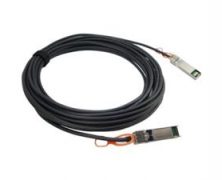Last week I had to head to one of our colocation sites to retrieve some hardware to be moved to another city, and to test out some new swank jank 10GbE switches. These new switches run over SFP+, which means making sure the switches are compatible with the transceivers on the cables. As soon as I discovered this was what was on the to-do list for the day, my stress levels immediately rose. See, SFP+ cables are great in theory. They’ve got a little PCB with a fancy clip, they do 10GbE, and… Well, that’s about it. It’s a cable. It is a conduit for electrons to move. What I hate most about SFP cables is the clip and tab. It’s truly awful design – if you break the plastic tab your only hope for disconnecting the cable is to get a small screwdriver or something similar into the latching mechanism. This is where switch and cable designers must want you to lose your temper. Switch designs, for some brilliant reason, have the ports of the SFP cables oriented such that the latches are facing one another on switches where there’s two rows of ports stacked one on top of another (or, at least the switches I’ve encountered). This means that if you make the mistake (or are forced to due to capacity) of connecting two SFP cables one on top of each other and break the tabs, they’re fused to the switch permanently for all intents and purposes. Depending on the design of the latching mechanism on the cable, there may very well be no feasible way to get a screwdriver or other tool into the gap. I know what you’re thinking. I must be doing it wrong. Like most hardware in IT, there’s...

